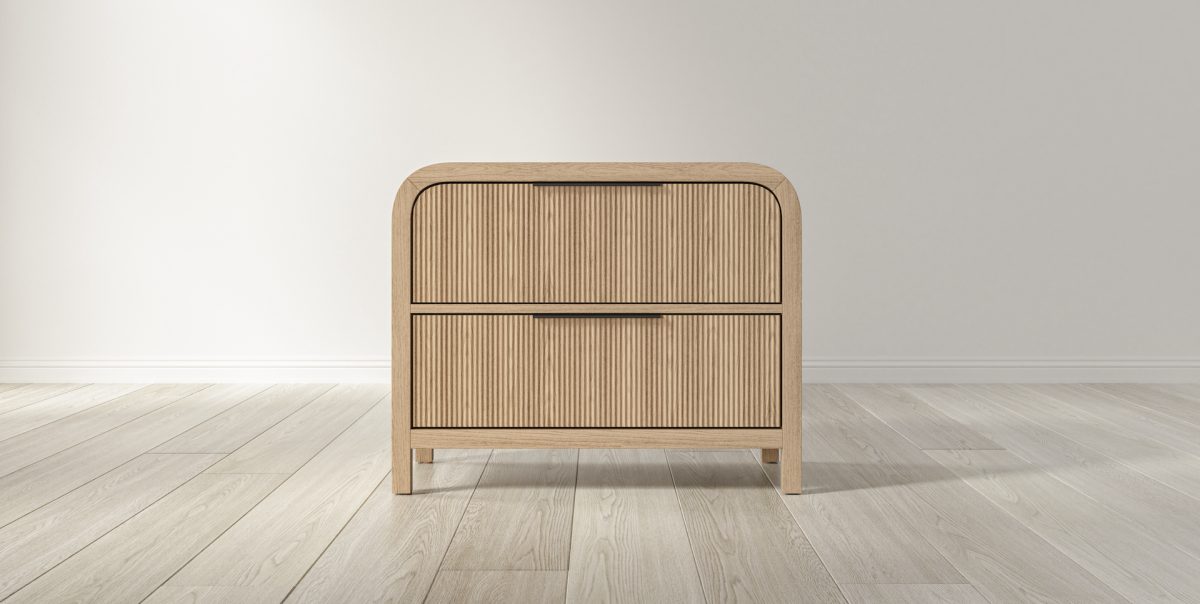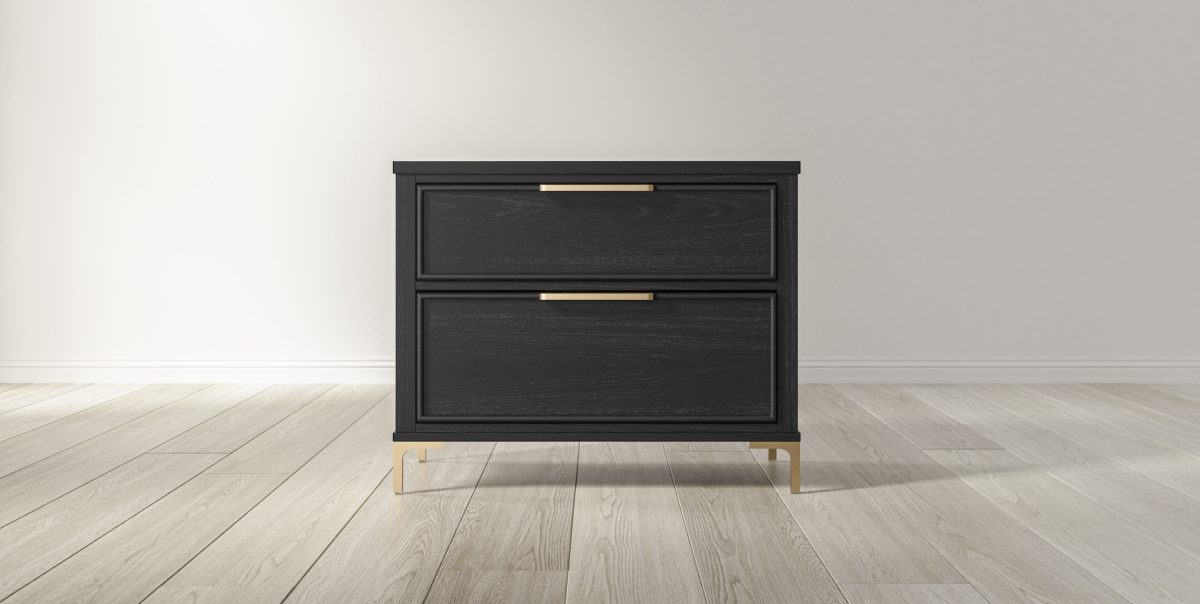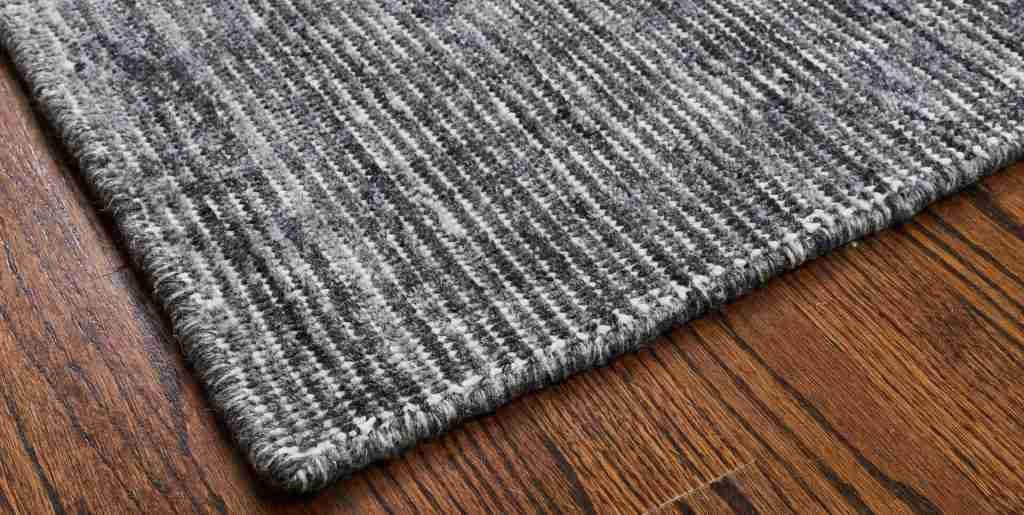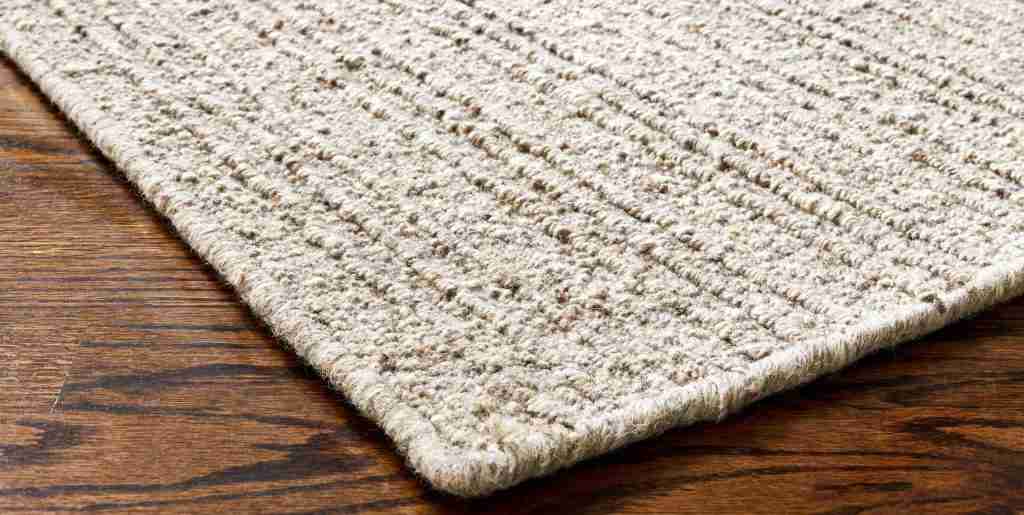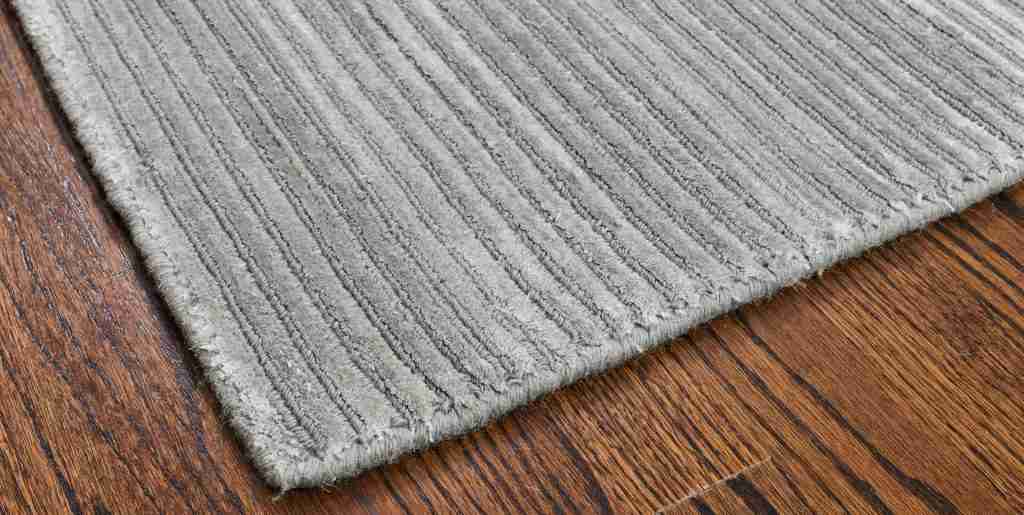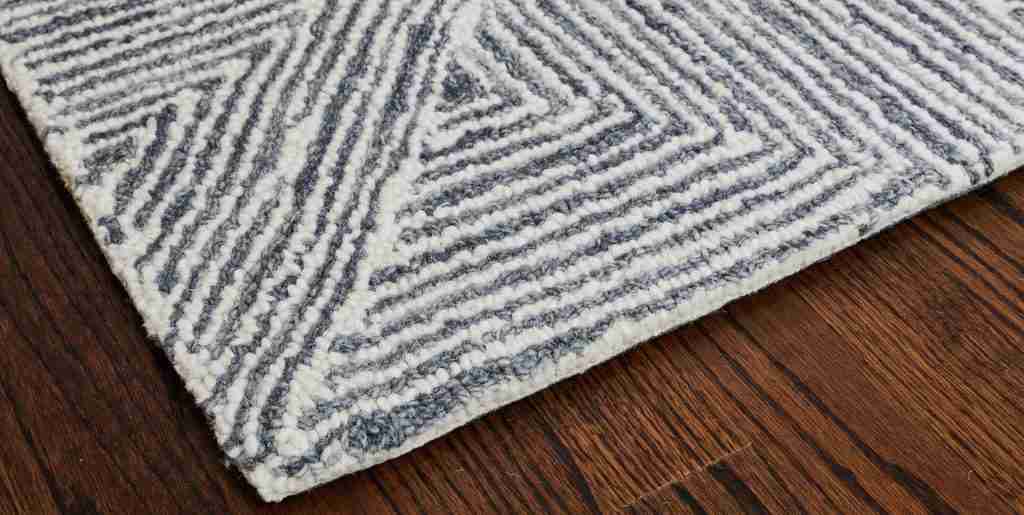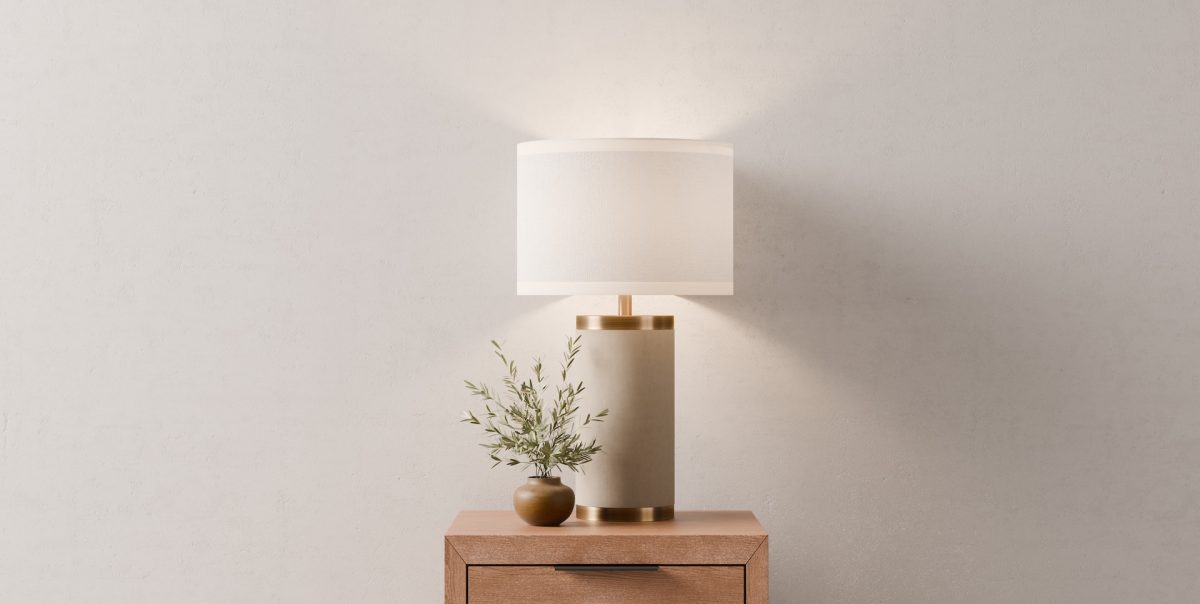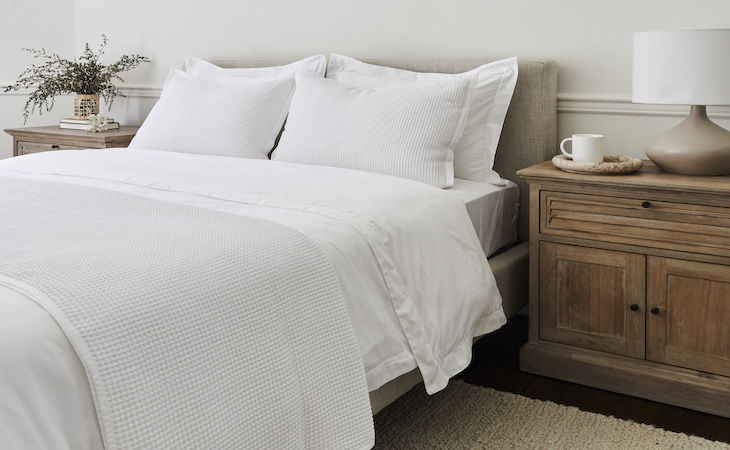
Bedroom Style, Bedroom Styling Guides
August 7, 2025
How to Cover Up Common Eyesores in Your Bedroom
Written by Shelby Deering

Common bedroom eyesores like cluttered surfaces, uneven lamp heights, poor window treatments, and undersized rugs can disrupt a room’s tranquility. Designer Ellie Stein suggests solutions like using symmetrical layouts, adding storage, adjusting lamp height with books, and choosing larger rugs to create a more cohesive, serene, and stylish space.
Our bedrooms are supposed to be tranquil places that allow us to relax into a peaceful slumber—and part of that is creating a space that’s aesthetically pleasing too.
From soft colors to dim lighting, you may love the way that you’ve decorated your bedroom. But perhaps there are a couple “eyesores” that could use disguising or tweaking to make it the most serene space possible.
Eyesores can include things you can’t remove from the room or design decisions you made that no longer look good to you. Keep reading for a list of common bedroom eyesores and how to hide them.
How to hide eyesores in the bedroom
Poorly-chosen window treatments
Window treatments can make or break a space—and that includes your bedroom, says Ellie Stein, founder and principal designer at Stein Studio.
Although you chose these window treatments yourself, perhaps they’re all wrong for the room, drawing your eye to your windows every time you walk in the room.
“When done wrong, window treatments can instantly make your bedroom feel like a poorly-executed DIY project,” she says. “But when done right, they can completely elevate the feel of the room.”
When it comes to window treatments in the bedroom and beyond, Stein says her rule of thumb is to mount drapery about 4 to 6 inches below the ceiling or crown (if your space has it)—and depending on the placement of the window, extend the drapery rod 10 to 12 inches past the window trim on either side of the window.
“I always love the look of curtains kissing the floor to finish off the perfectly tailored look,” she says.
Cluttered surfaces
Clutter is something that can naturally accumulate in a bedroom, especially on nightstand and dresser surfaces. Unfortunately, all that clutter can add up to an eyesore in a hurry—and it can make you feel overstimulated instead of relaxed, notes Stein.
“Everything that is on display should have a purpose, bring joy, and lean more minimalist than maximalist,” she says. “Yes, a framed photo of loved ones is great, but if you have four frames fighting for real estate along with your glasses, e-reader, TV remote, lotions, potions, and tissues? This will look chaotic instead of calm. Instead, keep the surfaces in your bedroom cleanly styled and remember that less is more.”
If you particularly struggle with nightstand clutter, Stein recommends opting for a piece with drawers or other kinds of storage. It’s a bonus if you can run cords through the back to keep your tech and charging station hidden, she says.
Challenging layout
Stein asks, “Do you ever walk into a bedroom and just feel like something is off, but you can’t quite figure out why?” This is typically due to an improper relationship of furniture to the space, she explains.
For instance, you may have a corner window or two and you’re not sure where to put your bed, which can dictate the layout of the rest of the room.
“The best approach is to find one point of symmetry in the room and go from there,” she suggests. “Ensure the main furniture, likely the bed, is on the main axis of symmetry and build out the room from there.”
If there’s a window on one side of the bed and not the other, try a creative layout of art on the windowless side, recommends Stein. Or, if there’s a door on one side of the bed, try a smaller nightstand on the door side of the bed and a larger nightstand on the opposite side of the bed to give equal visual weight, she says.
Too-small area rug
“Another huge bedroom eyesore is an area rug that is too small for the space,” says Stein.
When sized properly, rugs elevate the overall sense of comfort and warmth of a room—but when undersized, the room instantly feels less luxurious, she explains. “Not to mention, it also makes your room look smaller,” she adds.
Depending on the room size, Stein recommends getting a rug that’s about 12 inches from the walls on each side.
“Of course, this is not a hard-and-fast rule—the larger you go, the more ‘hotel-like’ your room is going to feel,” she says. “However, one thing you must avoid at all costs is getting a rug that doesn’t extend past your nightstand and bed setup.”
A rug grounds a space, and if it doesn’t extend past the main bedroom furniture, your furniture may feel like it is ‘floating’ in the space with no intentionality behind the placement, she adds.
Uneven lamp heights
“One of the biggest eyesores is when nightstand lamps are not the same height,” says Stein. “This has an instant effect of making the room feel unbalanced. This happens primarily when you go for more of an eclectic bedroom look and choose different but complementary nightstands and don’t take the height into account.”
For example, you might purchase a pair of antique tables that you want to use as nightstands, but one is 24 inches high and one is 26 inches high. The lamps are going to have a 2-inch height difference when installed and, although this might be a subconscious eyesore at first, it’ll throw off the good design intentions you had, says Stein.
“If you do have this issue, I love remedying the situation with the quick fix of adding a decorative book below the shorter lamp,” she says.
FAQs
How do you hide unsightly things in the bedroom?
“When it comes to undesirable architectural elements in a space, it’s often easier, and more budget-friendly, to embrace them instead of fighting against them,” says Stein. For instance, instead of fighting with an awkward corner window, find the point of symmetry and place the main design element, like your bed, there.
How do you hide a post in a room?
“When it comes to posts in the bedroom, one way to turn those lemons into lemonade is to integrate them into built-in cabinetry or even a closet,” says Stein. “You could easily do this in a bedroom and get some extra closet space out of it.”
But let’s say that remodeling isn’t an option. In this case, Stein says it’s imperative to create a furniture layout that embraces the column or pole, but draws attention away from it.
“Use it as a way to create opportunities for space separations or ‘zones,’ she says. “For example, if you have a small space on one side of the column and the majority of the bedroom is on the other side, the large zone will be where your bed and main bedroom furniture are.”
The other side of the column could be used as a dressing zone or even a small seating zone, says Stein. “When all is said and done, you will perceive both zones as individual spaces instead of one forced large space,” she adds.
Next, learn how to mix and match bedroom furniture like a pro.
Shelby Deering
Shelby Deering is a Madison, Wisconsin-based freelance lifestyle writer contributing home design and health articles to national publications. When she’s not writing, you’ll find her hiking, running, or walking with her husband and corgi, Dolly.
